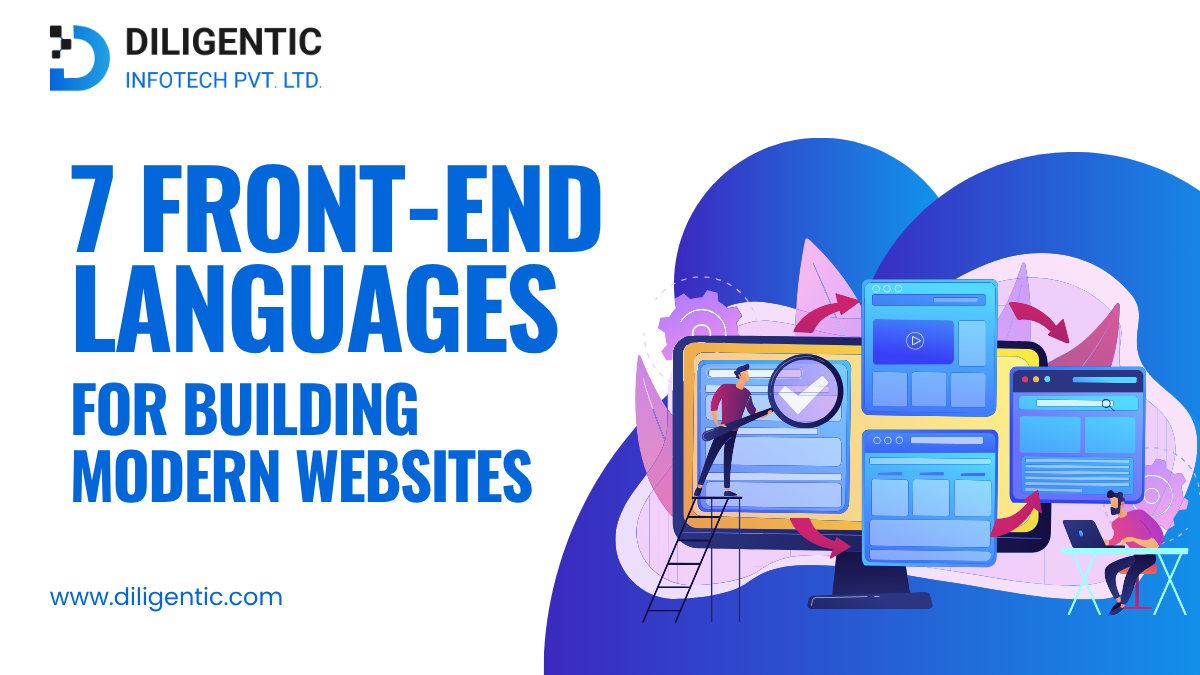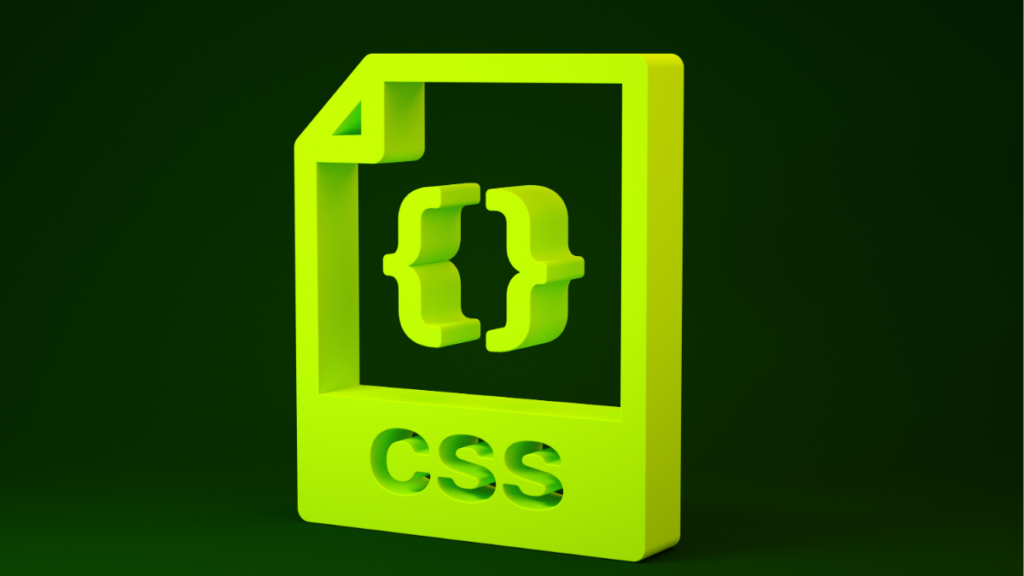SHARE

7 Front-end Languages for Building Modern Websites and Mobile Apps

When it comes to designing websites that feel smooth, fast, and user-friendly, choosing the right front-end languages is crucial. If you’re planning to start your journey into web development or simply want to polish your skills, understanding the best front-end developer languages is a good place to start.
Many beginners wonder, what are front-end languages? These programming languages handle everything you see on a website — from buttons and text to animations and layouts. Let’s walk through the front–end languages list you need to know, including real-world examples and why these languages matter today.
Table of Contents
What Are the Front-End Languages?

Front-end programming languages are used to create the parts of websites and apps that people see and use. Every time you click, scroll, or swipe, these technologies make it work smoothly. Without good front-end languages, websites would feel messy and hard to use.
Now, let’s jump straight into the best front-end languages web developers rely on in future.
1. HTML (HyperText Markup Language)

When discussing the front–end languages, HTML is the foundation. It structures the content you see on a webpage — headings, paragraphs, images, links — everything starts with HTML.
Why HTML Matters:
- It defines the layout and basic skeleton of a site.
- Every browser understands it.
- It works alongside CSS and JavaScript to build modern websites.
Real-World Example:
When you visit a news website, the article titles, descriptions, and sections are all organized using HTML.
2. CSS (Cascading Style Sheets)

HTML gives a website its structure, and CSS makes it look good. CSS controls things like colors, fonts, spacing, and layout. Without CSS, even excellent content would look plain and boring.
Why CSS is a Key Front-End Language:
- It makes websites visually appealing and user-friendly.
- Allows responsive designs for mobiles, tablets, and desktops.
- Works hand-in-hand with HTML for a complete front-end experience.
Real-World Example:
Think about a fashion e-commerce website. The stylish fonts, product grid layout, and smooth color transitions are all thanks to CSS.
3. JavaScript
JavaScript brings interactivity. It’s the engine behind dynamic actions — dropdown menus, real-time form validation, animated graphics, and interactive maps. JavaScript is the heartbeat of front-end development languages today.
Why JavaScript Stands Out:
- Enables real-time updates without refreshing the page.
- Powers front-end frameworks like React, Angular, and Vue.
- Makes websites more innovative and more responsive.
Real-World Example:
When you use Google Maps, zoom in, or drag the map around, that smooth movement is powered by JavaScript.
4. TypeScript
TypeScript is JavaScript with superpowers. It’s a superset of JavaScript that adds optional static typing, which helps catch errors early and makes code more readable and maintainable.
Why TypeScript is Valuable:
- Prevents bugs by catching mistakes at compile time.
- Makes code easier to scale, especially for large apps.
- Widely used in modern frameworks like Angular and tools like VS Code.
Real-World Example:
Large-scale enterprise apps like Microsoft Teams use TypeScript to manage growing codebases and keep the experience smooth.
5. Swift
Swift is the go-to front-end language for building apps on Apple platforms, iOS, macOS, and more. It’s known for its safety, speed, and expressive syntax, making it a favorite among iOS developers.
Why Swift Stands Out:
- Optimized for performance and user experience on Apple devices.
- Has modern features that make code easy to write and maintain.
- Officially supported by Apple with regular updates.
Real-World Example:
Apps like Lyft and LinkedIn use Swift for their iOS versions, ensuring snappy and reliable mobile experiences.
6. Kotlin
Kotlin is a modern language used to build Android front-end apps. It’s concise, expressive, and officially supported by Google, making it a strong alternative to Java for Android development.
Why Kotlin is Powerful:
- Cuts down on unnecessary code compared to Java.
- Safer with null checks to avoid crashes.
- Easily integrates with existing Java codebases.
Real-World Example:
Popular apps like Pinterest and Trello rely on Kotlin to build smooth and fast Android applications.
7. Dart
Dart is the language used in Flutter, a Google tool that lets you create apps for Android, iOS, and the web using one codebase. It’s great for building front-end apps that work on different platforms.
Why Dart Is a Smart Choice:
- Powers Flutter for building iOS, Android, web, and desktop apps.
- Fast development with hot reload and high performance.
- Google-backed and growing in popularity among startups and devs.
Real-World Example:
Apps like Google Ads and Alibaba use Dart with Flutter to deliver consistent experiences across platforms.
Comparison Table: Front-End Languages Overview
| Language | Main Use | Why It Matters | Example Apps/Websites |
|---|---|---|---|
| HTML | Builds the structure of web pages | It’s the base of every website; shows text, images, links | News websites, Blogs |
| CSS | Styles the visual layout | Makes websites look good and adjust to all screen sizes | Fashion websites, Portfolios |
| JavaScript | Adds interactivity and behavior | Brings pages to life with clicks, animations, and actions | Google Maps, YouTube |
| TypeScript | Adds types to JavaScript | Helps catch errors early and manage large projects | Microsoft Teams, Slack Web |
| Swift | Builds iOS front-end apps | Fast, safe, and used for all Apple platform apps | LinkedIn iOS, Lyft iOS |
| Kotlin | Builds Android front-end apps | Official Android language, simpler than Java | Pinterest, Trello |
| Dart | Used with Flutter for all platforms | Builds cross-platform apps from one codebase | Google Ads, Alibaba apps |
Choosing the Right Front-End Language
Choosing from the front-end languages list depends on what you want to build. If you’re just starting, mastering HTML, CSS, and JavaScript gives you a strong foundation. If you aim to work on bigger applications or dream of joining a tech company, learning TypeScript will open more doors.
Also, understanding front-end programming languages helps you collaborate better with designers, back-end developers, and even project managers. The aim is to create websites that function well, earn users’ trust, and provide an enjoyable experience.
So, if you’re wondering what the front-end languages you should learn first, start simple, stay consistent, and add advanced tools like TypeScript as you grow.
Conclusion
Mastering front-end languages is the first step toward building user-friendly, beautiful, and interactive websites. Whether aiming for personal projects or landing a top job, understanding the difference in front-end development languages will help you move faster and smarter.
From HTML’s structure to CSS’s design power, JavaScript’s interactivity to TypeScript’s reliability, and Swift, Kotlin, and Dart bridging mobile and cross-platform development, these tools make the web and apps what they are today.
By learning and applying the best front-end languages, you’re not just coding—you’re creating experiences people use and enjoy daily. At Diligentic Infotech, we turn ideas into easy-to-use and trusted websites and apps.
Have a project in mind? Let’s talk and make it happen!
FAQs
Why are front-end developer languages important?
Front-end development languages are essential for creating user-friendly and interactive experiences in websites and mobile applications.
Which are the best front-end languages to learn first?
The best front-end languages to start with are HTML, CSS, and JavaScript.
What is the difference between front-end programming languages and back-end languages?
Front-end programming languages handle user interfaces, while back-end languages manage server-side operations.
Engage with our experts
Subscribe to our newsletter!
Be the first to get exclusive offers and the latest news.
Posted on 18 Dec 2025
Why Cheap Website Development Fails; and How Professional Website Development Services Actually Make Money
Cheap website development looks affordable upfront, but quietly drains money through poor performance, weak conversions, SEO damage, security risks, and constant rework. Professional website development services cost more initially because they are built to generate leads, drive sales, build trust, and deliver long-term returns.
Posted on 28 Oct 2025
Top 7 Reasons Your Cleaning Business Can’t Succeed Without a Website
If your cleaning business still lacks a website, you’re missing out on visibility, credibility and growth. A strong cleaning website helps you showcase your services, target both house-cleaning services and commercial-scale jobs, collect leads around the clock, engage clients with business cleaning supplies info or service add-ons, and outpace competitors.

Reach out
Let’s Start Together
We're a collective of high caliber designers, developers, creators, and geniuses. We thrive off bouncing your ideas and opinions with our experience to create meaningful digital products and outcomes for your business.
Phone Number
+1 (825) 760 1797
hello[at]diligentic[dot]com
